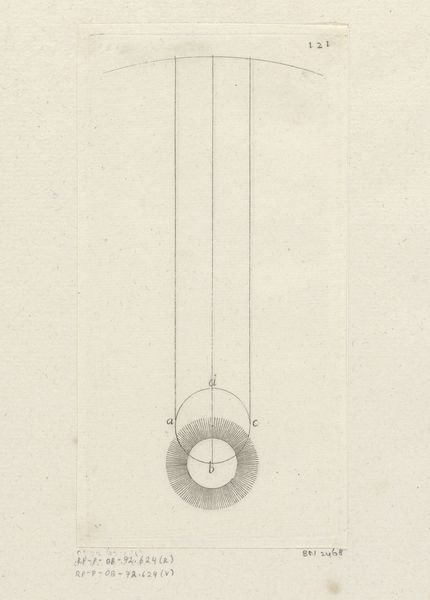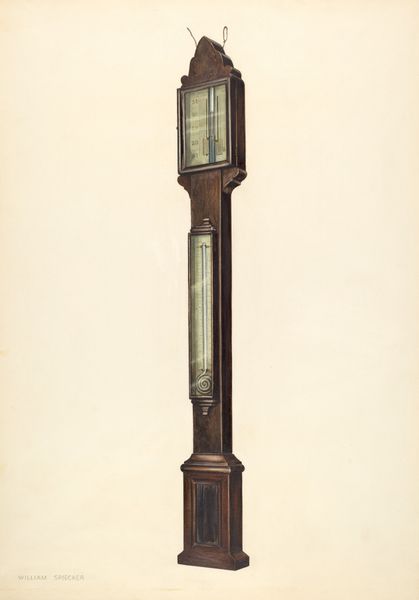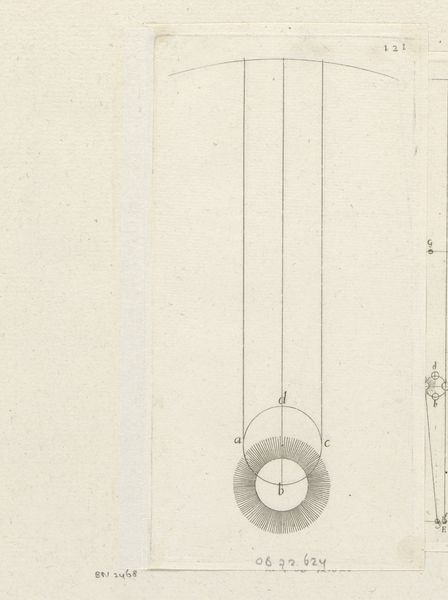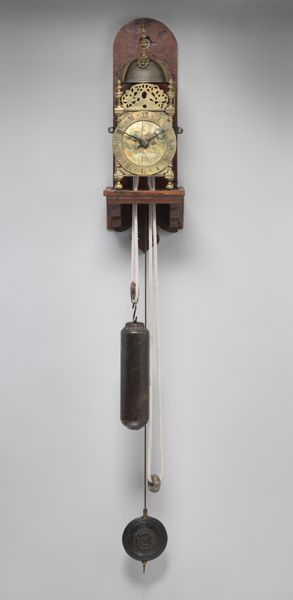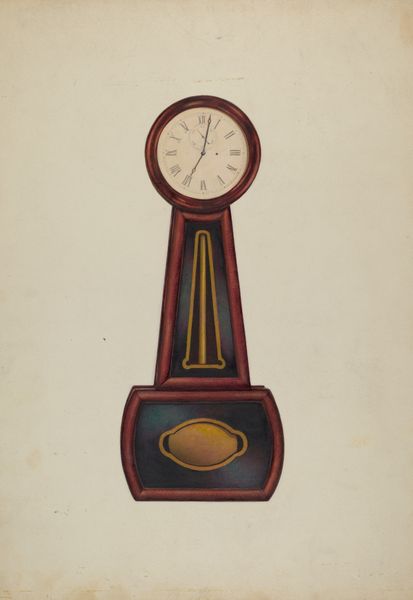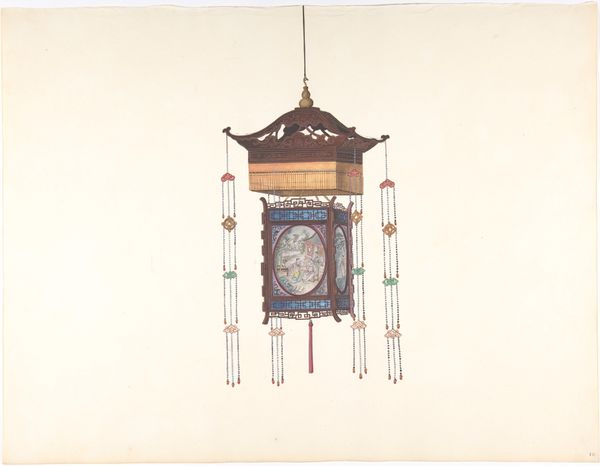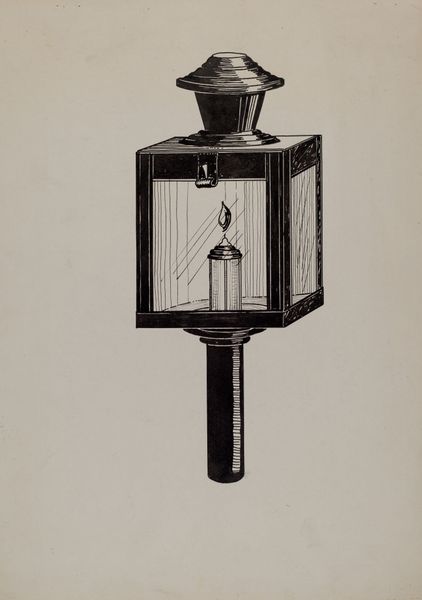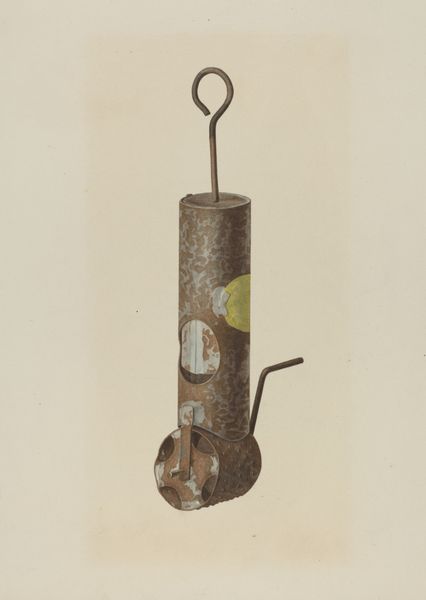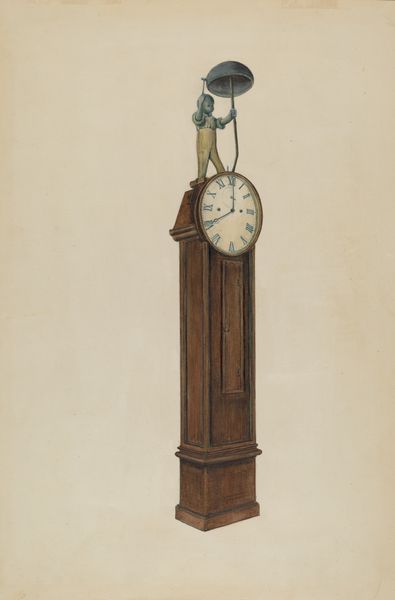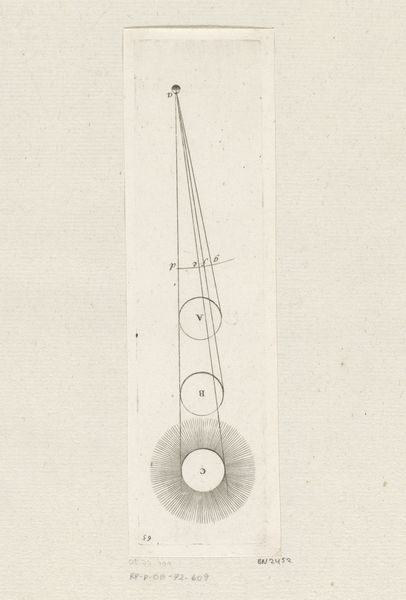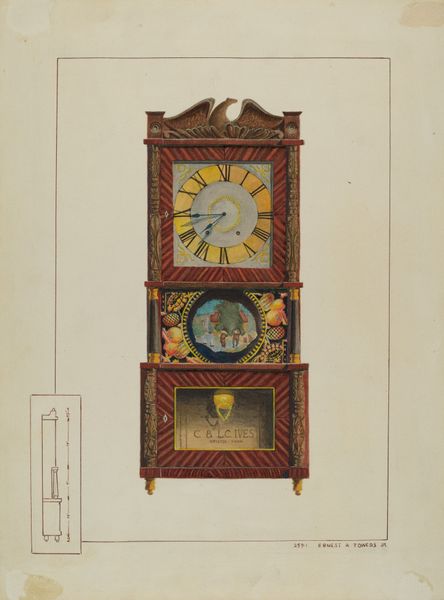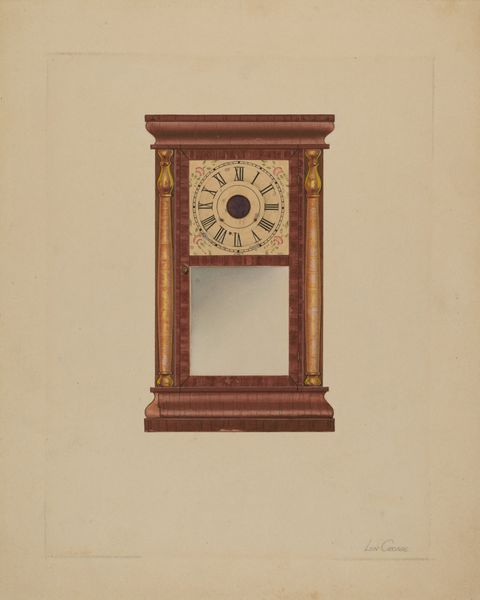
drawing, pencil
#
drawing
#
sculpture
#
pencil
#
academic-art
Dimensions: overall: 73.5 x 50.9 cm (28 15/16 x 20 1/16 in.)
Copyright: National Gallery of Art: CC0 1.0
Editor: This is Frank Wenger's "Clock," a pencil drawing done sometime between 1935 and 1942. It has such a delicate quality to it. What really strikes me is the stark contrast between the light face of the clock and the very dark wooden base and weights. How do you interpret this work? Curator: Well, seen from a historical perspective, consider the date it was produced. The late 1930s and early 1940s were dominated by anxieties about time, productivity, and control. The depiction of such a familiar object elevates what we can think about when we consider how time shapes our experiences and expectations. A clock is also such a domestic object; where do you imagine a clock like this might hang? Editor: Probably in someone's kitchen or living room… a communal space within the home. Curator: Exactly. Wenger might be subtly commenting on the evolving role of the family in that era. The clock’s prominent display signifies not just the regulation of household activities, but also potentially a commentary on domestic expectations or perhaps a longing for the "good old days.” Notice how precise Wenger's drawing is – could this be mirroring the precision expected in the industrialized world, which was itself very much structured around time? Editor: That’s fascinating. I never thought about it as anything beyond just a pretty drawing of a clock. Seeing it as a statement on societal pressures of the time shifts my entire perspective. Curator: Indeed. And it reminds us that even seemingly simple artwork can carry substantial socio-political weight, particularly regarding daily life and social values. Consider where it might have been displayed, too, how would an audience in the '40s perceive this everyday object? Editor: I guess I have a new appreciation for clocks and pencil drawings! It really makes you think about the artist’s intent and the cultural impact art can have, even something as simple as the passing of time. Curator: Absolutely. Paying attention to that time, place, and space allows us to see how artifacts become much more than what they seem.
Comments
No comments
Be the first to comment and join the conversation on the ultimate creative platform.


